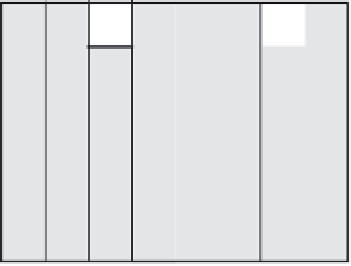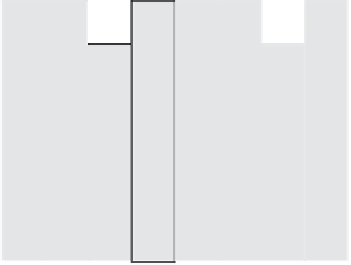Hardware Reference
In-Depth Information
Register base + $100
·
(16 bytes)
Flash registers
Register base + $10F
Flash start = $4000
$4200
$4400
$4800
Flash-protected low sectors
0.5K, 1K, 2K, 4K bytes
$3E
$5000
Flash array
12K
$8000
16K paged
memory
$38
$39
$3A
$3B
$3C
$3D
$3E
$3F
Block 1
Block 0
$C000
$30 $31
$32 $33 $34 $35 $36 $37
Block 3
Blo
ck 2
Flash-protected high sectors
2K, 4K, 8K, 16K bytes
$3F
$E000
$F000
$F800
Flash end = $FFFF
$FF00
,
$FF0F, flash protection/security field
Figure 14.8
■
MC9S12DP256 memory map
The contents of each FPROT register determine whether the entire block or just subsec-
tions are protected from being accidentally erased or programmed. Each flash block can be
entirely protected or can have one or two separate protected areas. One of these areas, known
as the
lower protected block
, starts at a point 32 kB (the page with the second-largest page
number in the same block) below the maximum flash block address and is extendable toward
higher addresses. The other area, known as the
upper protected block
, ends at the top of the
flash block and is extended toward lower addresses. The upper and lower protected blocks do
not meet up. In general, the upper protected area of flash block 0 is used to hold bootloader
code since it contains the reset and interrupt vectors. The lower protected area of block 0 and
the protected areas of the other flash blocks can be used for critical parameters that would not
change when the application program is updated.



















Search WWH ::

Custom Search